Family Charadriidae (Plovers)
The bird family Charadriidae includes the plovers and lapwings, about 64 to 66 species worldwide. They are small to medium-sized birds with compact bodies, short, thick necks and long, usually pointed, wings, but most species of lapwing may have more rounded wings. Their bill are usually straight and short, their toes are short, hind toe could be reduced or absent, depending on species. Most Charadriidae also have relatively short tails.
They are distributed through open country worldwide, mostly in habitats near water.
They hunt by sight, rather than by feel as longer-billed waders like snipe do. Foods eaten include aquatic and terrestrial invertebrates such as insects, worms, molluscs and crustaceans depending on habitat, and are usually obtained by a run-and-pause technique, rather than the steady probing of some other wader groups. They also feed on plant material.
While breeding, they defend their territories with highly visible aerial displays. Charadriidae are protective over their eggs and offspring. The parents protect their young by uttering an alarm call, performing distraction display and they may even attack the predator or intruder. Both parents take care of their offspring. The chicks are precocial; their parents do not feed them. Most species are monogamous, while less are polygamous.
In general, larger species have often been called lapwings, smaller species plovers and there are in fact two clear taxonomic sub-groups: most lapwings belong to the subfamily Vanellinae, most plovers and dotterels to Charadriinae.
Africa Wild Bird Book
Family Charadriidae (Plovers) Index
Species indigenous to southern Africa:
Family Charadriidae (Plovers)
Vanellus crassirostris Long-toed Lapwing 261
Vanellus armatus Blacksmith Lapwing 258
Vanellus spinosus Spur-winged Lapwing 920
Vanellus albiceps White-crowned Lapwing 259
Vanellus lugubris Senegal Lapwing 256
Vanellus melanopterus Black-winged Lapwing 257
Vanellus coronatus Crowned Lapwing 255
Vanellus senegallus African Wattled Lapwing 260
Pluvialis fulva Pacific Golden Plover 253
Pluvialis dominica American Golden Plover
Pluvialis squatarola Grey Plover 254
Charadrius hiaticula Common Ringed Plover 245
Charadrius dubius Little Ringed Plover
Charadrius pecuarius Kittlitz's Plover 248
Charadrius tricollaris Three-banded Plover 249
Charadrius marginatus White-fronted Plover 246
Charadrius alexandrinus Kentish Plover 908
Charadrius pallidus Chestnut-banded Plover 247
Charadrius mongolus Lesser Sand Plover 250
Charadrius leschenaultii Greater Sand Plover 251
Charadrius asiaticus Caspian Plover 252
Family Charadriidae (Plovers)
Vanellus crassirostris Long-toed Lapwing 261
Vanellus armatus Blacksmith Lapwing 258
Vanellus spinosus Spur-winged Lapwing 920
Vanellus albiceps White-crowned Lapwing 259
Vanellus lugubris Senegal Lapwing 256
Vanellus melanopterus Black-winged Lapwing 257
Vanellus coronatus Crowned Lapwing 255
Vanellus senegallus African Wattled Lapwing 260
Pluvialis fulva Pacific Golden Plover 253
Pluvialis dominica American Golden Plover
Pluvialis squatarola Grey Plover 254
Charadrius hiaticula Common Ringed Plover 245
Charadrius dubius Little Ringed Plover
Charadrius pecuarius Kittlitz's Plover 248
Charadrius tricollaris Three-banded Plover 249
Charadrius marginatus White-fronted Plover 246
Charadrius alexandrinus Kentish Plover 908
Charadrius pallidus Chestnut-banded Plover 247
Charadrius mongolus Lesser Sand Plover 250
Charadrius leschenaultii Greater Sand Plover 251
Charadrius asiaticus Caspian Plover 252
-
Klipspringer
- Global Moderator
- Posts: 5858
- Joined: Sat Sep 14, 2013 12:34 pm
- Country: Germany
- Contact:
Long-toed Lapwing
261. Long-toed Lapwing (Formerly known as Blacksmith Plover) Vanellus crassirostris
Order: Charadriiformes. Family: Charadriidae
Description
31 cm. Long-legged and unusually long-toed lapwing; Large boldly marked lapwing with white crown, face, and throat contrasting with black nape and breast. In flight, the pure white wings (except for a few black outer primaries) are an obvious feature and give rise to alternative name White-winged Plover.
Immature has blackish crown and black feathers with buffy margins on hind neck and breast.
Distribution
It is found in Angola, Botswana, Burundi, Cameroon, Chad, Democratic Republic of the Congo, Ethiopia, Kenya, Malawi, Mozambique, Namibia, Nigeria, Rwanda, South Africa, Sudan, Tanzania, Uganda, Zambia, and Zimbabwe.
Habitat
Core habitat is wetlands (swamps and rivers) with floating aquatic vegetation, but can sometimes be found in other wetland habitats like mudflats. Usually found singly or in pairs.
Diet
It feeds largely on aquatic insects.
Breeding
They make their nests on shallow scrapes in the mud along the water's edge, in shallow depressions in short grasses or on floating vegetation.
Call
The call is a long, dry series of high-pitched ticking notes.
Order: Charadriiformes. Family: Charadriidae
Description
31 cm. Long-legged and unusually long-toed lapwing; Large boldly marked lapwing with white crown, face, and throat contrasting with black nape and breast. In flight, the pure white wings (except for a few black outer primaries) are an obvious feature and give rise to alternative name White-winged Plover.
Immature has blackish crown and black feathers with buffy margins on hind neck and breast.
Distribution
It is found in Angola, Botswana, Burundi, Cameroon, Chad, Democratic Republic of the Congo, Ethiopia, Kenya, Malawi, Mozambique, Namibia, Nigeria, Rwanda, South Africa, Sudan, Tanzania, Uganda, Zambia, and Zimbabwe.
Habitat
Core habitat is wetlands (swamps and rivers) with floating aquatic vegetation, but can sometimes be found in other wetland habitats like mudflats. Usually found singly or in pairs.
Diet
It feeds largely on aquatic insects.
Breeding
They make their nests on shallow scrapes in the mud along the water's edge, in shallow depressions in short grasses or on floating vegetation.
Call
The call is a long, dry series of high-pitched ticking notes.
- Lisbeth
- Site Admin
- Posts: 65876
- Joined: Sat May 19, 2012 12:31 pm
- Country: Switzerland
- Location: Lugano
- Contact:
Long-toed Lapwing Photos
261. Long-toed Lapwing Vanellus crassirostris
Botswana, Okavango Panhandle © Lisbeth
Links:
http://sabap2.birdmap.africa/docs/sabap1/261.pdf
Botswana, Okavango Panhandle © Lisbeth
Links:
http://sabap2.birdmap.africa/docs/sabap1/261.pdf
"Education is the most powerful weapon which you can use to change the world." Nelson Mandela
The desire for equality must never exceed the demands of knowledge
The desire for equality must never exceed the demands of knowledge
Blacksmith Lapwing
258. Blacksmith Lapwing (Formerly known as Blacksmith Plover) Vanellus armatus (Bontkiewiet)
Order: Charadriiformes. Family: Charadriidae
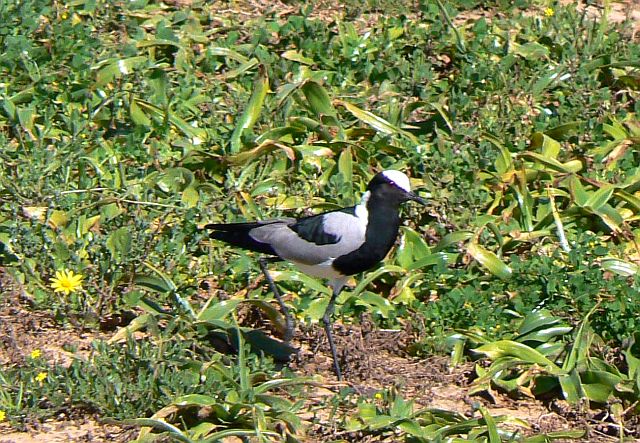
Addo Elephant National Park, main camp waterhole
Description
30 cm. A strikingly-marked bird with a white cap, black neck and body, and grey wings. Tail black and white. White belly, nape patch, underwings, rump. Rest of plumage black. It is one of five lapwing species (two African, one Asian and two Neotropical) that share the characteristics of a carpal (wing) spur (sometimes hidden in feathers), red eye and a bold pied plumage. The bare parts are black.
Females average larger and heavier but the sexes are generally alike.
Juvenile has the basic plumage pattern of adults but in tones of speckled brown with buff tips to feathers.
Distribution
Endemic to sub-Saharan Africa, occurring from Kenya through Tanzania to southern DRC, Angola and Zambia to southern Africa. Within southern Africa it is common in Namibia, northern Botswana, Swaziland, South Africa and western Mozambique.
Habitat
It generally prefers moist, short grassland, mudflats around dams, sewage pans, lakes, rivers, estuaries, salt pans, road verges, sports fields, airports and heavily grazed areas.
Diet
It eats aquatic and terrestrial invertebrates (such as molluscs, crustaceans, worms and insects), doing most of its foraging early and late in the day, standing still while intently scanning for prey; once spotted it dashes forward to pluck the animal from the surface of the ground or water. It also searches for insect larvae in dung, sometimes trembling its foot in shallow water to attract prey to the surface.
Breeding
Usually a monogamous, territorial solitary nester, although polygyny is rarely recorded. The nest is a simple scrape or hoofprint in the ground, usually lined with vegetation, stones and mud flakes, often placed close to water. If the ground is wet the nest is a more substantial mound, to reduce the risk of flooding destroying the eggs. Egg-laying season is year-round, peaking from July-October. 1-4 speckled eggs are laid, which are incubated by both sexes for about 26-33 days, typically in shifts of about 20-80 min. The chicks are well camouflaged and precocial, usually able to leave the nest within an hour of hatching, after which they remain within 10m of their parents, so that they can warn their young when predators approach. As times goes by they gradually range further away from the adults, fledging at about 40 days old and usually becoming fully independent about a month later.
Call
A metallic alarm call tink-tink-tink (sounding like a blacksmith hammering metal). Listen to Bird Call.
Status
Common resident, may be sedentary or nomadic, with migratory populations in north of region. Usually in pairs or small family groups in non-breading season. Classified as Least Concern (LC) on the IUCN Red List.
Order: Charadriiformes. Family: Charadriidae

Addo Elephant National Park, main camp waterhole
Description
30 cm. A strikingly-marked bird with a white cap, black neck and body, and grey wings. Tail black and white. White belly, nape patch, underwings, rump. Rest of plumage black. It is one of five lapwing species (two African, one Asian and two Neotropical) that share the characteristics of a carpal (wing) spur (sometimes hidden in feathers), red eye and a bold pied plumage. The bare parts are black.
Females average larger and heavier but the sexes are generally alike.
Juvenile has the basic plumage pattern of adults but in tones of speckled brown with buff tips to feathers.
Distribution
Endemic to sub-Saharan Africa, occurring from Kenya through Tanzania to southern DRC, Angola and Zambia to southern Africa. Within southern Africa it is common in Namibia, northern Botswana, Swaziland, South Africa and western Mozambique.
Habitat
It generally prefers moist, short grassland, mudflats around dams, sewage pans, lakes, rivers, estuaries, salt pans, road verges, sports fields, airports and heavily grazed areas.
Diet
It eats aquatic and terrestrial invertebrates (such as molluscs, crustaceans, worms and insects), doing most of its foraging early and late in the day, standing still while intently scanning for prey; once spotted it dashes forward to pluck the animal from the surface of the ground or water. It also searches for insect larvae in dung, sometimes trembling its foot in shallow water to attract prey to the surface.
Breeding
Usually a monogamous, territorial solitary nester, although polygyny is rarely recorded. The nest is a simple scrape or hoofprint in the ground, usually lined with vegetation, stones and mud flakes, often placed close to water. If the ground is wet the nest is a more substantial mound, to reduce the risk of flooding destroying the eggs. Egg-laying season is year-round, peaking from July-October. 1-4 speckled eggs are laid, which are incubated by both sexes for about 26-33 days, typically in shifts of about 20-80 min. The chicks are well camouflaged and precocial, usually able to leave the nest within an hour of hatching, after which they remain within 10m of their parents, so that they can warn their young when predators approach. As times goes by they gradually range further away from the adults, fledging at about 40 days old and usually becoming fully independent about a month later.
Call
A metallic alarm call tink-tink-tink (sounding like a blacksmith hammering metal). Listen to Bird Call.
Status
Common resident, may be sedentary or nomadic, with migratory populations in north of region. Usually in pairs or small family groups in non-breading season. Classified as Least Concern (LC) on the IUCN Red List.
Blacksmith Lapwing Photos
258. Blacksmith Lapwing (Formerly known as Blacksmith Plover) Vanellus armatus (Bontkiewiet)
Order: Charadriiformes. Family: Charadriidae
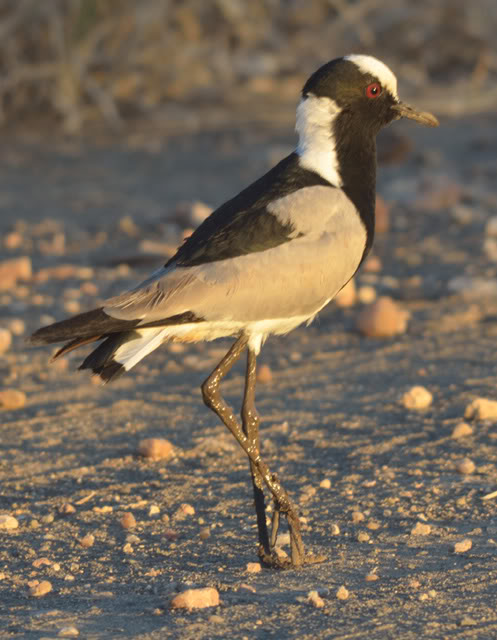 © BluTuna
© BluTuna
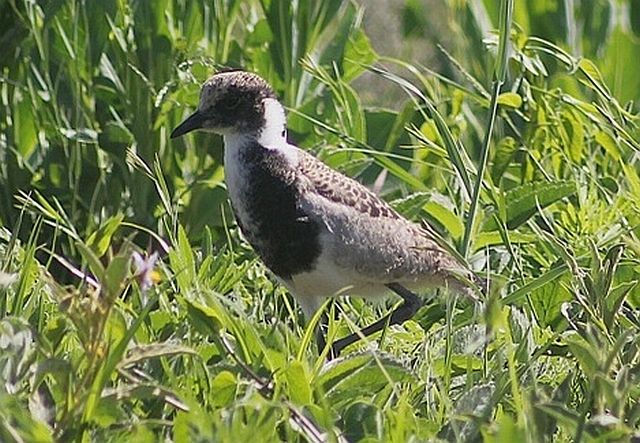 Juvenile © Amoli
Juvenile © Amoli
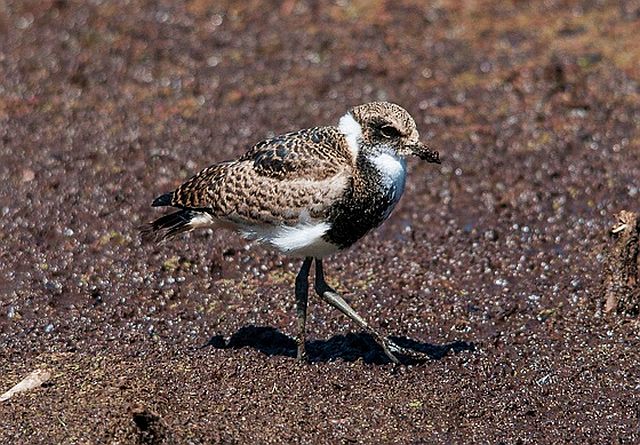 © steamtrainfan
© steamtrainfan
Juvenile. Marievale, Gauteng
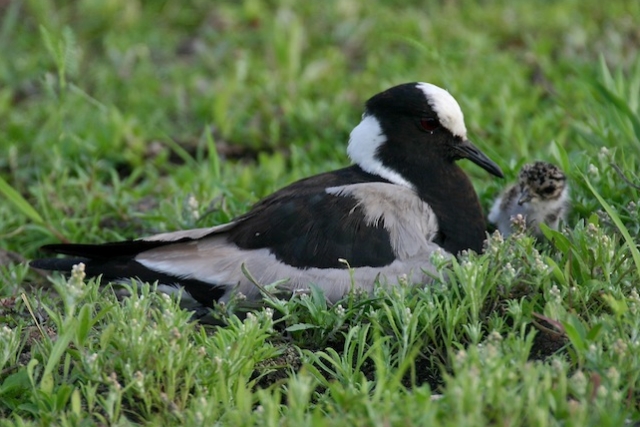 © ExFmem
© ExFmem
Adult & chick, Rooibosrant Dam, Kruger National Park
Links:
http://sabap2.adu.org.za/docs/sabap1/258.pdf
http://sabap2.adu.org.za/spp_summary.ph ... §ion=3
Avian Demography Unit
Order: Charadriiformes. Family: Charadriidae
 © BluTuna
© BluTuna Juvenile © Amoli
Juvenile © Amoli © steamtrainfan
© steamtrainfanJuvenile. Marievale, Gauteng
 © ExFmem
© ExFmemAdult & chick, Rooibosrant Dam, Kruger National Park
Links:
http://sabap2.adu.org.za/docs/sabap1/258.pdf
http://sabap2.adu.org.za/spp_summary.ph ... §ion=3
Avian Demography Unit
- nan
- Posts: 26476
- Joined: Thu May 31, 2012 9:41 pm
- Country: Switzerland
- Location: Central Europe
- Contact:
White-crowned Lapwing
259. White-crowned Lapwing (Formerly known as Whitecrowned Plover) Vanellus albiceps (Witkopkiewiet)
Order: Charadriiformes. Family: Charadriidae
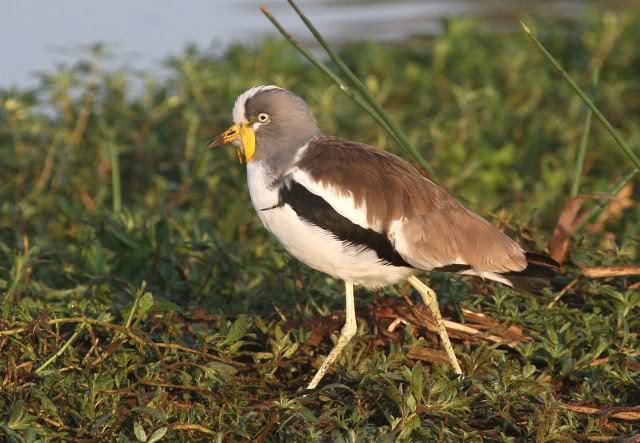
Description
Spectacular long-spurred, grey-headed lapwing with a white crown stripe, and long dangling yellow wattles.
Wings and tail are patterned in black and white, brown back, white underparts, mainly grey head with a white crown and foreneck. The eyering, facial wattles and legs are yellow. Females, males and young birds are similar in plumage.
Similar species: Might be confused with African Wattled Lapwing, but the latter species has a dark (not white) breast.
Distribution
From Senegal to the Central African Republic south to northern Angola, with a separate population in Tanzania, Zambia and southern Africa. Within southern Africa it is uncommon in north-western and south-western Zimbabwe, north-eastern South Africa, central and northern Mozambique, northern Botswana and the Caprivi Strip (Namibia).
Habitat
Sandbanks and sandbars of major rivers.
Diet
It mainly eats insects and aquatic invertebrates, doing most of its foraging close to the water, locating prey visually before plucking them from the surface.
Breeding
Monogamous, defending a linear territory along the river bed. The nest is a shallow scrape in a damp sandbank, occasionally lined with small sticks and pebbles. It is typically placed in the open, occasionally adjacent to a driftwood or vegetation. Egg-laying season is from July-November, peaking from August-October. It lays 2-4 eggs, which are incubated by both sexes for at least 26 days. The chicks can feed themselves within 24 hours of hatching and are cared for by both parents, who become increasingly aggressive towards intruders.
Call
Sharp high-pitched piping peek, peeuw or kyip and similar notes. Listen to Bird Call.
Status
Locally common resident.
Order: Charadriiformes. Family: Charadriidae

Description
Spectacular long-spurred, grey-headed lapwing with a white crown stripe, and long dangling yellow wattles.
Wings and tail are patterned in black and white, brown back, white underparts, mainly grey head with a white crown and foreneck. The eyering, facial wattles and legs are yellow. Females, males and young birds are similar in plumage.
Similar species: Might be confused with African Wattled Lapwing, but the latter species has a dark (not white) breast.
Distribution
From Senegal to the Central African Republic south to northern Angola, with a separate population in Tanzania, Zambia and southern Africa. Within southern Africa it is uncommon in north-western and south-western Zimbabwe, north-eastern South Africa, central and northern Mozambique, northern Botswana and the Caprivi Strip (Namibia).
Habitat
Sandbanks and sandbars of major rivers.
Diet
It mainly eats insects and aquatic invertebrates, doing most of its foraging close to the water, locating prey visually before plucking them from the surface.
Breeding
Monogamous, defending a linear territory along the river bed. The nest is a shallow scrape in a damp sandbank, occasionally lined with small sticks and pebbles. It is typically placed in the open, occasionally adjacent to a driftwood or vegetation. Egg-laying season is from July-November, peaking from August-October. It lays 2-4 eggs, which are incubated by both sexes for at least 26 days. The chicks can feed themselves within 24 hours of hatching and are cared for by both parents, who become increasingly aggressive towards intruders.
Call
Sharp high-pitched piping peek, peeuw or kyip and similar notes. Listen to Bird Call.
Status
Locally common resident.
Kgalagadi lover… for ever
https://safrounet.piwigo.com/
https://safrounet.piwigo.com/
- nan
- Posts: 26476
- Joined: Thu May 31, 2012 9:41 pm
- Country: Switzerland
- Location: Central Europe
- Contact:
White-crowned Lapwing Photos
259. White-crowned Lapwing (Formerly known as Whitecrowned Plover) Vanellus albiceps (Witkopkiewiet)

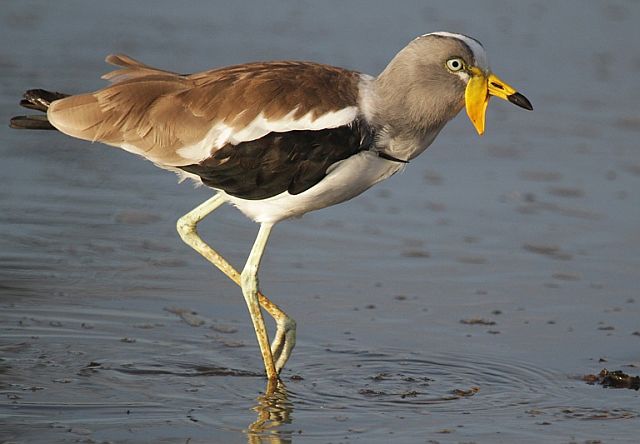 © leachy
© leachy
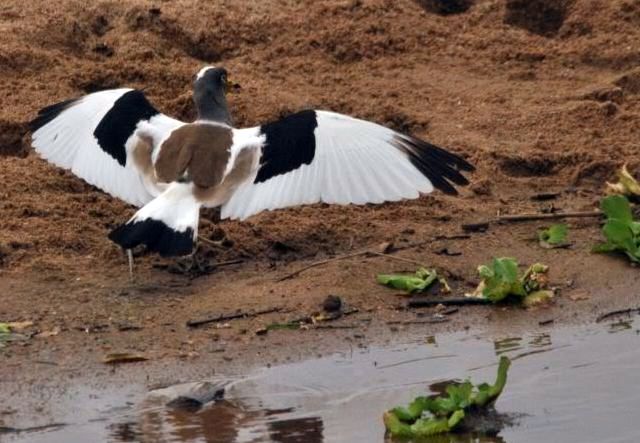 © leachy
© leachy
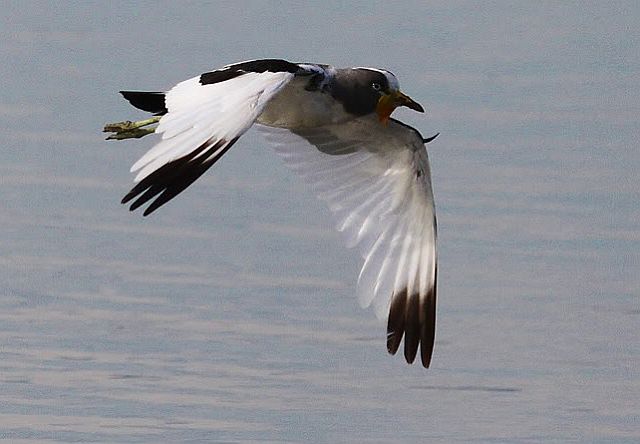 © leachy
© leachy
Links:
Species text Sabap1
Sabap2
Ian Sinclar. SASOL VOELS VAN SUIDER AFRICA (3de UIT)

 © leachy
© leachy © leachy
© leachy © leachy
© leachyLinks:
Species text Sabap1
Sabap2
Ian Sinclar. SASOL VOELS VAN SUIDER AFRICA (3de UIT)
Kgalagadi lover… for ever
https://safrounet.piwigo.com/
https://safrounet.piwigo.com/
- nan
- Posts: 26476
- Joined: Thu May 31, 2012 9:41 pm
- Country: Switzerland
- Location: Central Europe
- Contact:
Senegal Lapwing
256. Senegal Lapwing (formerly known as Lesser Black-winged Plover) Vanellus lugubris (Kleinswartvlerkkiewiet)
Order: Charadriiformes. Family: Charadriidae
Description
Length 23-26 cm, weight 107-117 g. Brown back, throat and head; black bill, black legs, orange eyes. In flight, it shows broad white trailing edges to the wings, the underwing is dark with white primaries.
Juveniles are paler and have buff edgewings to the mantle and the wingfeathers.
Similar species: It resembles the Black-winged Lapwing, but slightly smaller. In addition, the white forehead patch does not extend to the eye, the eye-ring is black rather than red, and the legs are blackish (dull pink or reddish in Black-winged Lapwing); in flight the secondaries are white (not tipped black) and the underwing is brown and white (rather than all white).
Distribution
Occurs discontinuously from Senegal through the DRC to Uganda, Kenya, Tanzania and Malawi to southern Africa. In southern Africa it is generally scarce in Mozambique, south-eastern Zimbabwe and north-eastern South Africa. This migrant lapwing, is essentially a Mozambiquan bird, but can sometimes be seen in South Africa at the western point of its range.
Habitat
It generally prefers dry, open plains with patches of bare ground and short grass, as well as savanna, open woodland, bare fields, heavily grazed grassland, airfields and pan edges.
Movements and migrations
Its movements in southern Africa are not well understood, as it is mainly resident in Zimbabwe but is a regular non-breeding summer visitor to the Kruger National Park, while it is a breeding winter visitor to northern KwaZulu-Natal. It departs from KwaZulu-Natal in the period from December-January, probably heading to Mozambique and the South-African lowveld.
Diet
It mainly eats termites, supplemented other terrestrial invertebrates, doing most of its foraging visually, plucking from the ground by day and night.
Breeding
Monogamous, usually loosely colonial nester, with the male defending a small territory by calling from an elevated mound and chasing intruders away. Egg-laying season is from June-December, peaking from August-December. It lays 3-4 eggs, which are incubated by both sexes for about 27-28 days, in shifts of roughly 40 minutes (longer in colder weather). The chicks leave the nest after about four hours, once their down is dry; the adults take turns in caring for the chicks and directing them to food items, so that the parent not on duty can feed. If a predator approaches the parent on guard performs a distraction display while the chicks find somewhere to hide. They eventually fledge at about 29-31 days old, sometimes only becoming fully independent at the onset of the following breeding season, a year later.
Order: Charadriiformes. Family: Charadriidae
Description
Length 23-26 cm, weight 107-117 g. Brown back, throat and head; black bill, black legs, orange eyes. In flight, it shows broad white trailing edges to the wings, the underwing is dark with white primaries.
Juveniles are paler and have buff edgewings to the mantle and the wingfeathers.
Similar species: It resembles the Black-winged Lapwing, but slightly smaller. In addition, the white forehead patch does not extend to the eye, the eye-ring is black rather than red, and the legs are blackish (dull pink or reddish in Black-winged Lapwing); in flight the secondaries are white (not tipped black) and the underwing is brown and white (rather than all white).
Distribution
Occurs discontinuously from Senegal through the DRC to Uganda, Kenya, Tanzania and Malawi to southern Africa. In southern Africa it is generally scarce in Mozambique, south-eastern Zimbabwe and north-eastern South Africa. This migrant lapwing, is essentially a Mozambiquan bird, but can sometimes be seen in South Africa at the western point of its range.
Habitat
It generally prefers dry, open plains with patches of bare ground and short grass, as well as savanna, open woodland, bare fields, heavily grazed grassland, airfields and pan edges.
Movements and migrations
Its movements in southern Africa are not well understood, as it is mainly resident in Zimbabwe but is a regular non-breeding summer visitor to the Kruger National Park, while it is a breeding winter visitor to northern KwaZulu-Natal. It departs from KwaZulu-Natal in the period from December-January, probably heading to Mozambique and the South-African lowveld.
Diet
It mainly eats termites, supplemented other terrestrial invertebrates, doing most of its foraging visually, plucking from the ground by day and night.
Breeding
Monogamous, usually loosely colonial nester, with the male defending a small territory by calling from an elevated mound and chasing intruders away. Egg-laying season is from June-December, peaking from August-December. It lays 3-4 eggs, which are incubated by both sexes for about 27-28 days, in shifts of roughly 40 minutes (longer in colder weather). The chicks leave the nest after about four hours, once their down is dry; the adults take turns in caring for the chicks and directing them to food items, so that the parent not on duty can feed. If a predator approaches the parent on guard performs a distraction display while the chicks find somewhere to hide. They eventually fledge at about 29-31 days old, sometimes only becoming fully independent at the onset of the following breeding season, a year later.
Kgalagadi lover… for ever
https://safrounet.piwigo.com/
https://safrounet.piwigo.com/
- nan
- Posts: 26476
- Joined: Thu May 31, 2012 9:41 pm
- Country: Switzerland
- Location: Central Europe
- Contact:



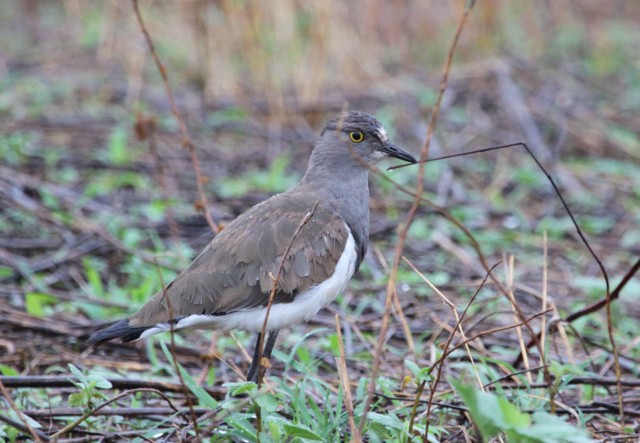 © nan
© nan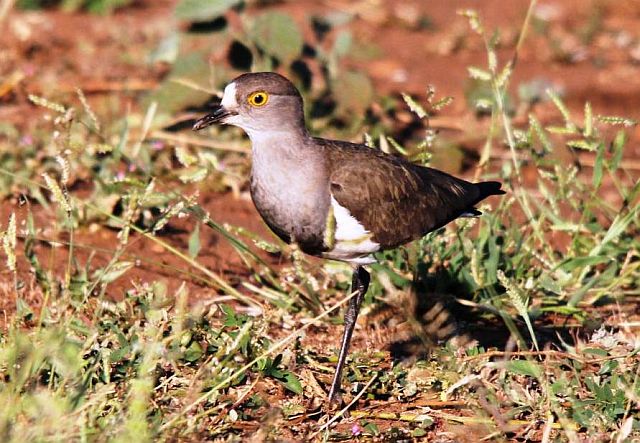 © pooky
© pooky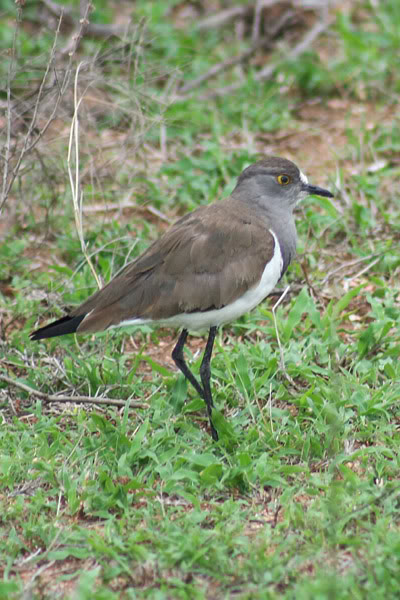 © leachy
© leachy